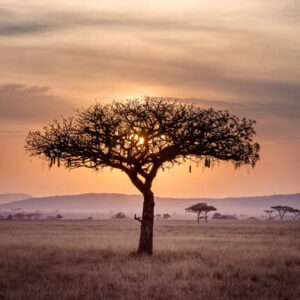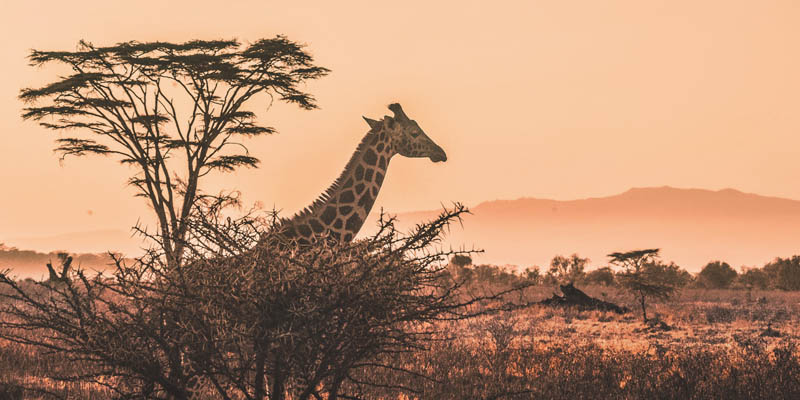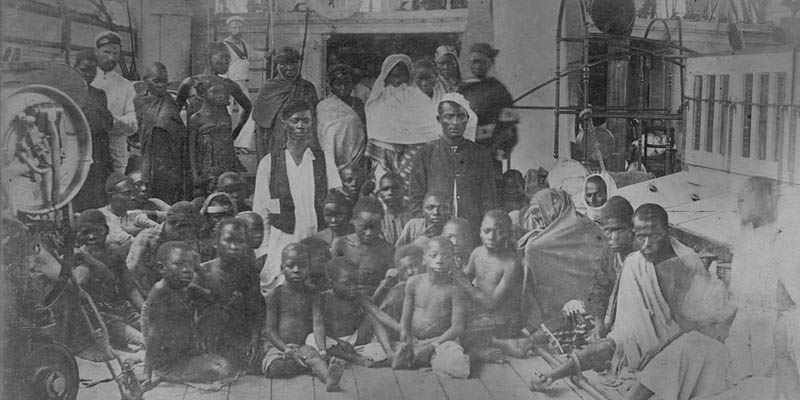Table of Contents
CHARACTERISTICS OF AFRICA
Biography
- It is the world’s third-largest continent, after Asia and America.
- The tropical climate is predominant, while it is desert and hot in the north of the continent.
- It is home to several of the world's most endangered species, including the royal zebra, the mountain gorilla, and the Ethiopian wolf.
- It is considered the cradle of civilization, as the first hominid species developed in the territories of Mesopotamia and Egypt.
- It presents a great diversity of cultures, such as Arab, Egyptian, and European.
- It has one of the widest linguistic diversities in the world, though the main official languages are English and French. Many Africans speak Igbo, Swahili, Kanuri, and Yoruba, among other languages.

- Continent:
Africa
- Area:
11,698,000 sq mi (30,300,000 km2)
- Population:
1,447,000,000 people.
- Number of countries:
54
We explore Africa, and describe its physical and cultural characteristics. In addition, we discuss its economy, religion and history.

What is Africa?
Africa is one of Earth’s six continents and the world’s third-largest after Asia and America. It borders Europe to the north, Antarctica to the south, and is surrounded by the Atlantic Ocean to the west and the Indian Ocean to the east. It covers a total area of 11.7 million square miles (30.3 million km2), which accounts for 20.3% of the planet’s total land area.
A distinctive feature of Africa is the high level of poverty experienced by most countries on the continent. According to the World Bank, 9 of the 10 world’s poorest countries are located in Africa. These are the Central African Republic, Burundi, Malawi, Mozambique, Niger, Democratic Republic of the Congo, Somalia, South Sudan, and Guinea Bissau. In these countries, indicators such as malnutrition and infant mortality rates are well above the world’s average.
How did Africa get its name? The origin of the name "Africa" is unclear, though it is believed to have derived from the Latin term Africus, meaning "south wind". This term was used by the Romans to refer to the lands south of the Mediterranean Sea, where the hot, dry winds from Africa originated.
CHARACTERISTICS OF AFRICA
- It is the world’s third-largest continent, after Asia and America.
- The tropical climate is predominant, while it is desert and hot in the north of the continent.
- It is home to several of the world's most endangered species, including the royal zebra, the mountain gorilla, and the Ethiopian wolf.
- It is considered the cradle of civilization, as the first hominid species developed in the territories of Mesopotamia and Egypt.
- It presents a great diversity of cultures, such as Arab, Egyptian, and European.
- It has one of the widest linguistic diversities in the world, though the main official languages are English and French. Many Africans speak Igbo, Swahili, Kanuri, and Yoruba, among other languages.
- See also: North America
Area, population and countries of Africa
The African continent covers an area of 11,698,000 square miles (30,300,000 km2), stretching from the Mediterranean Sea in the north to Cape Agulhas in the south. It is surrounded by the Atlantic and Indian Oceans, and is separated from Asia by the Red Sea and the Suez Isthmus.
Africa comprises 54 sovereign states. Most of these were European colonies during the 19th and 20th centuries, mainly of Great Britain, France, Holland, Germany, Belgium, Spain, and Italy.
The largest countries in Africa by area are: Algeria, with 1.48 million square miles (2.38 million km2), the Democratic Republic of the Congo with 1.39 million square miles (2.34 million km2), and Sudan with 1.11 million square miles (1.8 million km2).
In 2023, Africa’s total population was estimated at 1.447 billion people, accounting for 16.5 % of the world's total population. The most populous countries on the continent are Nigeria with 218 million inhabitants, Ethiopia with 123 million, and Egypt with 110 million.
Physical geography and climate of Africa

Africa has a relatively low average elevation of about 2,100 ft (650 m) above sea level. The continent is traversed by several mountain ranges, like the Atlas Mountains in the North, the Ahaggar and Tibesti Mountains in the Sahara Desert, and the East African mountains, where Mount Kilimanjaro is located, which at 19,324 ft (5,890 m) is the highest peak on the continent.
Due to its location straddling the equator and the tropics of Cancer and Capricorn, Africa has a predominantly warm climate. According to latitude and rainfall levels, the following climate zones can be distinguished:
- Equatorial climate. Found in the center of the continent, in areas near the equator. It is characterized by high temperatures and heavy rainfall throughout the year.
- Tropical wet climate. Located north and south of the equatorial climate. It features high temperatures and abundant rainfall. It has a marked dry season.
- Tropical dry climate. Found in mid-latitudes. It experiences very hot summers and colder winters, with very low rainfall throughout the year.
- Desert climate. Present in the Sahara and Kalahari regions. It is characterized by very high temperatures and a near total absence of rainfall throughout the year.
- Mediterranean climate. Found in the northernmost part of the continent, near the Mediterranean Sea. It is characterized by hot dry summers, and rainy, cooler winters.
Due to the rainy climate and predominantly flat relief, the African continent is characterized by the presence of long and large rivers. The longest and largest are:
- The Nile River, at 4,132 miles (6,650 km) long, is the world's second-longest river.
- The Congo River, with a length of 2,920 miles (4,700 km).
- The Niger River, with a length of 2,550 miles (4,100 km).
The rainforests of Africa boast a wide variety of animal and plant species. The African savanna, in turn, has a rich variety of fauna and is unique in being the only ecoregion in the world that is home to large animals such as giraffes, elephants, and rhinoceroses.
Culture and religion in Africa
Africa is a culturally highly diverse continent. European colonial history, the expansion of the Arab world, and the culture of the indigenous African peoples have resulted in a multiplicity of languages spoken across the continent. The most widely spoken languages are:
- Arabic. Spoken by over 260 million people.
- English. Spoken by over 200 million people.
- French. Spoken by over 170 million people.
- Swahili. Spoken by over 120 million people.
- Oromo. Spoken by over 70 million people.
In addition to these languages, it is estimated that over 1,500 languages and dialects are spoken in Africa, belonging to the indigenous peoples who lived on the continent before the arrival of the Arabs and Europeans.
The two predominant religions on the continent are Christianity, accounting for 43 % of the population, particularly in the south and west, and Islam, which represents 40 %, especially in the north and east. The rest of the population are adherents of traditional African religions, Hinduism, Buddhism, and Judaism.
Economy of Africa
The African continent is rich in natural resources; therefore, the economies of most countries are based on primary activities like agriculture, fishing, and mining. In some regions, these activities represent the main source of employment and generate a large part of the countries' GDP.
- Agriculture. A major activity in all of Africa and the main source of employment for the majority of people living in rural areas. Common crops include maize, rice, wheat, cassava, coffee, tea, and cocoa. Fishing is also an important activity in many coastal regions and a significant source of employment in countries like Senegal or Equatorial Guinea.
- Mining. Another important economic activity in Africa, the continent boasts a wealth of mineral resources in gold, diamonds, copper, coltan, iron, and oil. Among the major mineral producers are South Africa, the Democratic Republic of Congo, Zambia, and Ghana. Nigeria and Angola are two of Africa's and the world's leading oil producers.
- Industry. In some countries like South Africa, Morocco, and Egypt, the industrial sector is relatively developed, particularly in food and beverage production, textiles, and petrochemicals. However, these industries are usually small and limited compared to other regions in the world.
- Tourism. A growing economic activity, many African countries have important tourist attractions including national parks, beaches, historic cities, and wildlife reserves. Among the most popular tourist destinations are South Africa, Egypt, and Morocco.
Countries in Africa
Africa is made up of 54 countries, all of which are full members of the United Nations. In addition, there are economic and political blocs formed by some of the countries on the continent. The most important of these are:
- The African Union (AU). A political and economic organization established to promote cooperation among African countries. It was created in 2002 to succeed the Organization of African Unity (OAU), and has all 54 African countries as members.
- The Economic Community of West African States (ECOWAS). An economic bloc aimed at achieving the economic and political integration of West African countries. Founded in 1975, it has 15 member countries.
- The Community of Sahel-Saharan States (CEN-SAD). An economic organization that seeks to foster cooperation among countries in the Sahel and Sahara regions. It was established in 1998 and has 29 member countries.
History of Africa

The African continent is considered the cradle of human civilization. Archaeological evidence shows the presence and development of hominids, the first primates that walked upright and displayed high degree intelligence.
It is estimated that these hominids lived four million years ago. Modern humans inhabited the eastern region of sub-Saharan Africa 200,000 years ago. They then spread to the north and east, eventually migrating throughout the world.
Archaeological evidence has revealed that the earliest African population prior to the arrival of the Europeans inhabited the present-day region of Ghana. The Arabs were the first to arrive in North and West Africa through several waves of migration. They managed to establish aspects of their culture into African customs, such as their religion, Islam, and the Arabic language.
From the 15th and 16th centuries onward, millions of Africans, mainly young men, were taken as slave labor to the Americas to work in mines and plantations in Europe.
In the 19th century, European presence on the continent intensified. Following the Berlin Conference of 1885 and 1886, the major European powers divided the continent politically for the exploitation of natural resources and labor. It was thus that France, Great Britain, Holland, Belgium, Germany, Spain, and Italy partitioned Africa, beginning an aggressive process of political and economic colonization.
In the 20th century, especially in the 1950s and 1960s, the process of decolonization began, through which African countries ceased to be European colonies becoming independent nations. However, internal conflicts, high poverty rates, and economic dependence on European powers persist in most African countries to the present day.
Explore next:
Was this information useful to you?
Yes NoThank you for visiting us :)